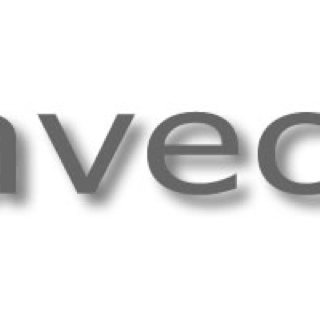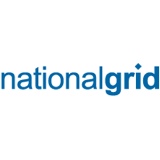Information
-
Customer Name
-
Job Number
-
QC Performed by
-
Location
-
Room
-
Conducted on
-
Add signature
Section 01 - Initial Checks
Section 01 - Physical Enviroment
-
1. Verify physical inventory of all control system equipment to be assigned to this project via BOM, change orders, proposal, and drawings.
-
2. Do you have a full understanding of the customer’s requirements?
Section 02 – Touch Panel / Pushbutton Panel / GUI
-
1. Are we using a TI standard GUI? If not, please note reason.
-
2. Do you have a sign-off from the customer indicating that they accepted this GUI?
-
3. GUI Evaluation:
-
a. Does the touch panel layout appear professional or are there fuzzy graphics, <br>misspelling or cartoonish aspects to the design?
-
b. Is the customer logo on the front page and is it the correct logo?
-
c. Does the layout appear easy-to-understand for a non-engineer?
-
d. Are the buttons large enough for a finger to press?
-
e. Does the Service page show the job number?
-
4. Are there overlapping buttons or active areas on the GUI that make it hard to accurately select a “button”? Look at dial pads especially.
-
5.Is button feedback on the touch panel derived from interrogating the device under control and therefore true feedback? If not please clarify the reason below:
-
6. Display power-up or down messages correspond with what the displays are actually doing? Not just timers.
-
7. Do all button on and off-states show up correctly?
-
8. Is there a method to manually answer an audio call?
-
9. Is there a method to manually answer a video call?
-
10. Can you clear or edit a phone number in the number field?
-
11. Can you look up and store numbers in the codec phone book?
-
12. Is there a method to select presentation sources / return to camera source for the codec?
-
13. Is there a method to store and recall presets for the VTC camera?
-
14.Do volume and mute controls appropriate for usage show up automatically on each page?
Section 03 – Control System Code
-
1. Are all the variables declared in your program initialized to a known state at power-up?
-
2. Are all variables given meaningful names that relate to their purpose?
-
3. There should not be any unused signals/variables in the code that are there just taking up memory. Any variables/signals/devices that are no longer being used should be removed so that all of the code has been cleaned up for the final release?
-
4. Comments have been added to the code to document the thought process that goes into <br>each module, function, and major pieces of logic.
-
5. The programming header has been properly filled out?
This should include the following: -
• Programmers Name:
-
• Date:
-
• Job Number:
-
• Purpose of the Program (Scope)
-
• Important System Info (IP addresses, passwords for devices, etc.)
-
• Any necessary notes on the system design / setup that would be useful at a <br>later date.
-
6. When applicable you are using functions/classes/modules to encapsulate system functionality to increase the efficiency, readability, maintainability, and reusability of code? These functions and modules should also contain proper inline documentation on their use and purpose?
-
7. Each major iteration through code has been properly documented with change logs and stored as a new revision?
-
8. Any "weird" pieces of logic that occur in the code has a mind map or some form of documentation that describes the reason for it and heavily documents the logic so that it would be easy for another programmer to come behind you and know what is going on?
-
9. Is it possible to dial a bridge access number and password after initiating an audio call?
-
10. Is it possible to dial a bridge access number and password after initiating a video call?
-
11. Are you intelligently controlling source devices rather than just emulating a handheld remote?
-
12. Is there a method to change the screen layout from dual screen mode to single screen mode and then to select a source for the “blank” screen to allow presentation of a local source for Webex or similar?
-
13. Have you defined separate volume controls for speech reinforcement, program playback <br>and teleconferencing receive audio?
-
14. Are volume levels correctly initialized at power-up (starting point guideline: playback 50%, teleconferencing 50%, speech reinforcement 90%)?
-
15. Do volume levels re-initialize when re-selecting the operational mode?
-
16. Are mutes correctly initialized at power-up?
-
17.Does privacy mute control the audio to the phone hybrid and the codec in the audio DSP? All far end audio.
-
18. Are you sending privacy mute to the codec at the same time to ensure the mute symbol shows up on screen?
-
19. Can you add a phone call to an existing video call without affecting routing or mute state?
-
20. Does the system shut down properly?
-
21. Is the audio muted at shut down?
-
22. Does the system start up reliably after an operator-selected shut down?
-
23. Does the system start up properly after a power failure?
-
24. Are variables that need to have their values maintained stored in appropriate non-volatile memory locations?
-
25. If there is any built-in shortcut dialing, does this work on phone book entries rather than hard coded IP addresses?
-
26. If phone book lookups cannot be used, are dialing shortcuts using aliases rather than hard-coded IP addresses?
-
27. If this is a secure system, have you cleared the last number dialed cache on the video codec when switching between secure modes?
Section 07 – Final Items
-
Ensure you have filled out the IP configuration form for the job and provided to the PM.
-
1. Ensure that equipment used to verify your code has been returned to the PM along with<br>all accessories.
-
2. Ensure that the PM is aware of engraving that needs to be ordered.
-
3. All code has been uploaded to the project server.
-
Note to Project Manager: Follow up on the work to be done, and oversee that it is completed within a reasonable time frame.














